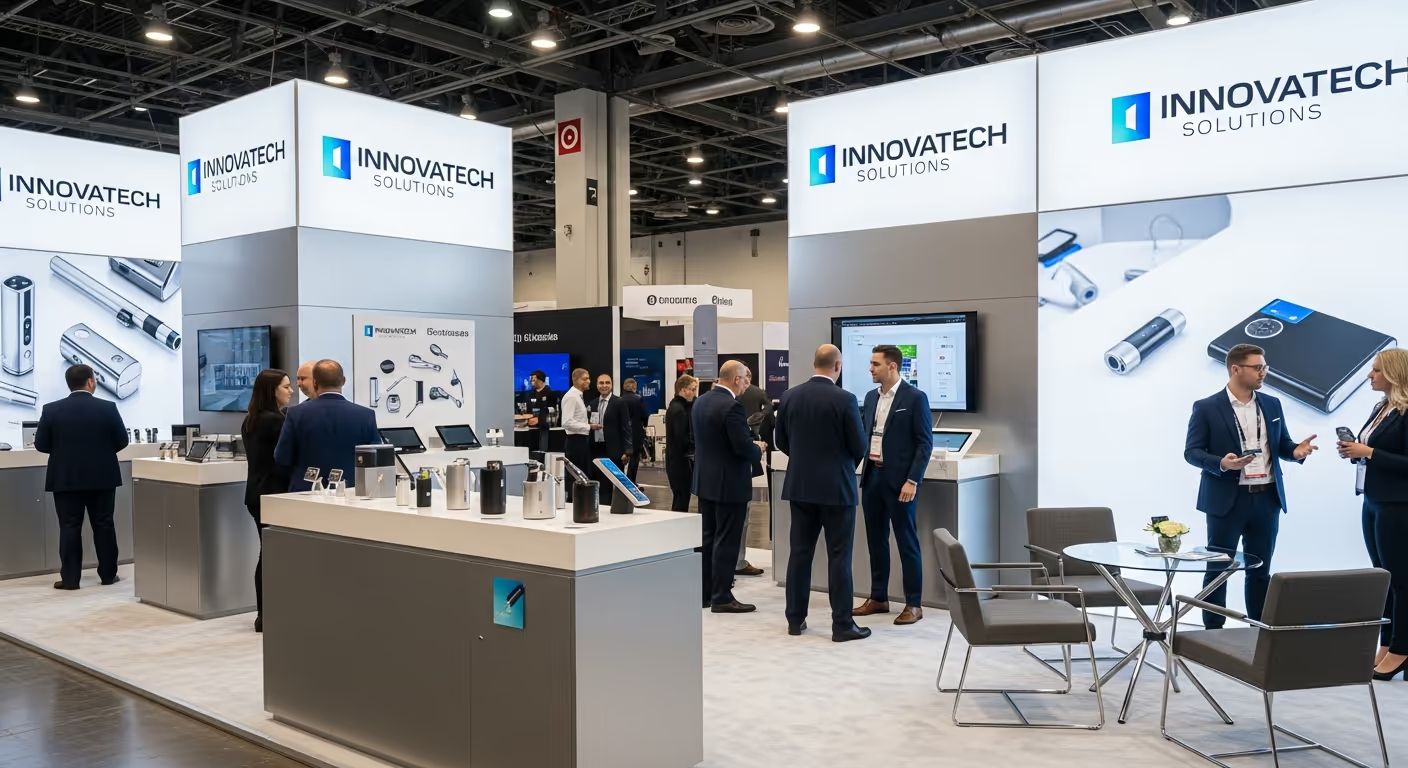
A practical guide for Expo West and other major shows. Goals, booth flow, scripts, staffing, lead capture, and follow up that turns traffic into pipeline.

Quick answer: Pick one main outcome, design a booth that moves people toward that outcome, train a small team on short scripts, capture clean lead data in seconds, and book follow up while interest is high. Keep reporting simple so leaders can adjust during the show, not after.
Many teams arrive with a pretty build and a long wish list. The result is noise and missed chances. Start with one outcome for this show. It could be meetings with retail buyers, demos for qualified prospects, or signups for a post show trial. Write it in one line and point every choice at it. Your build, your staff plan, your scripts, and your handouts should all serve this one line.
Think of the booth as a short path with a start, a middle, and a finish. Each step has a clear job.
Remove clutter. Open corners invite people. Put tall signage at the outer edge so traffic sees your name before they walk past.
Write short lines that match your goal. Keep them natural and easy to remember. Here is a simple set you can adapt.
Small teams can win when roles are clear. Start with these and add only if needed.
In rush hours, the scheduler is the difference between noise and results. If you expect volume, make this a dedicated role.
Do not let forms slow you down. Use a short set of fields that the team can complete without breaking the flow.
Scan badges when allowed. If the scan fails, have the four fields ready on a tablet or phone. Train staff to type the note while the visitor finishes the demo. Short habit, big payoff.
Meetings set at the booth hold better than emails sent after the show. Keep a small calendar with ten or fifteen minute blocks. Offer two slots. If they say yes, book it now and send a short confirmation. For high value targets, set a quiet corner or a nearby table so the chat does not compete with floor noise.
If taste or touch sells your product, plan a fast, clean routine. Keep portions small and consistent. If you pour, pre pour small rounds. If you cook, use simple tools and one short step per dish. Keep wipes, towels, and a waste plan ready. Train staff on food safety. If you want a deeper run on sampling, see our guide on Costco roadshows for flow math you can adapt.
Most handouts end up in bags and never get read. Keep it tight.
Do not wait for a recap after the show. Share a short view at the end of each day.
If you want a full framework for ROI, read Experiential marketing reporting. How to measure ROI with clean data.
Have the first email ready before the show starts. Send it the same day with a short note that matches the badge tag and the booth chat.
Plan a second touch two days later and a third touch one week later. Keep each touch short and useful.
Good energy wins on a show floor. Plan real breaks and rotate roles. Keep water and light snacks behind the booth. Short reset moments keep smiles real and scripts crisp.
You do not need a giant booth to feel strong. Clean lines, clear names, and tight lighting send the right message. Show real product, not just renderings. Keep bags and boxes out of sight. Fix scuffs fast with a small kit. A tidy space tells buyers that your team can deliver after the show.
Ship early to a trusted hub. Label crates in big type. Pack spare cables, tape, and cleaning tools. Walk the route from dock to booth the day before. If you need help, our Logistics team can plan storage, shipping, and setup so your crew can focus on people.
Book as early as you can. Six months is common for space and hotels. Creative and staffing can run later, but earlier is calmer and gives you better choices.
Size matters less than flow. A small open space with a tight script can outperform a larger cluttered space. Start with the path you want visitors to take, then frame that path with walls and signs.
It depends on your category and the size of your team. Pick a number that you can hit with your current crew. If you hit it early on day two, raise the bar and focus the scheduler on the best targets.
Give away something people use the same week. Samples or a short trial work well. Avoid heavy packs that slow people down on the floor. If you must ship, offer a simple form with verified addresses.
Use a short loop. Invite people to a two minute demo at the top of the hour. Ask partners to bring one guest. Share a quick tip on your social channel if it fits your brand voice.
Want help shaping your next show. Start with Trade show experiences and add Engagement marketing moments that fit your story. If tasting proves your point, bring a simple demo plan from Retail demonstrations. Ready to plan. Request a proposal or Contact us. For a full list of formats, visit Services and for markets we serve, see Industries.